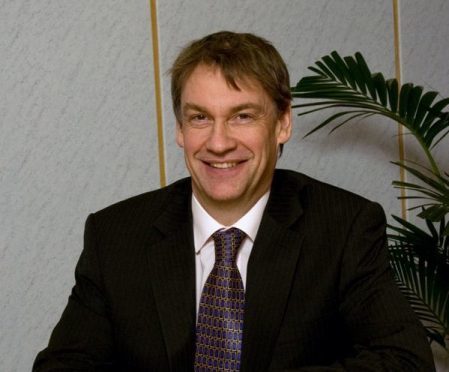It was supposed to be the shortest day, but my feet were in total uproar, blister central. To make matters worse, on the way some cheery soul told me that my destination, Kinlochleven, was the midge capital of the world. He was proud about it too!
Glorious sunshine saved my sanity and the distraction of seeing a bit of industrial history close up as I shuffled down towards the village. There it was in all its glory: the earliest hydroelectric scheme, built in 1905 to smelt aluminium. Beautiful, to my eyes.
The West Highland Way excites the senses and makes you think. And in its strange sights and sounds, and its people, you see what resilience is. In more remote parts, Lairig Moire, or the top of Loch Lomond, it was hauntingly sad to see a jumble of rocks where farms or villages once stood. But nearby you can see enterprise, imagination and community passion enough to restore your spirits.
Right at the start of my walk, two glorious weeks of sunshine and the canny locals had transformed Loch Lomond into a veritable charivari. A few days later Kinlochleven showed that the most remote parts of Scotland can hide amazing feats of engineering and commerce.
And it was observing locals and recent arrivals taking control of their destiny that inspired me to read the report on the planning system by the Planning Review Group – an independent panel appointed by Scottish Ministers – when I got back. A peculiar choice of relaxation whilst soaking your feet in bath salts, I know.
What’s different about this normally dry topic is the fact that it sits at the heart of the problems facing people in Scotland looking for an affordable home, or trying to start or grow a business, including those who want to build a new life in the Highlands.
Although the report only uses the word “rural” twice, it can be forgiven. Perhaps just for now; because I feel it gets right to the nub of the current malaise in planning. People, planners, developers and the utilities don’t seem to trust each other, far less feel inclined to co-operate.
The process is obsessed with detail and back covering, compounds this with forgetting place making, and seems blind to the bigger impact on society. And it’s the great Scottish public and the economy that suffer. So what does the report say?
There’s too much for me to cover now, but its themes include a more inclusive, democratic role for community led planning, with “local place plans”, support for land reform, different approaches to housing like self-build, and systematic flexibility to respond to local needs, especially for island communities.
Its recommendations also addressed the need for leadership and culture change within the profession, and a more muscular approach to delivery at national and local level, less micro-management. On the practical side there was much to admire in its focus on “infrastructure first”, a particular problem here in the North-east, the potential for a community infrastructure fund, and better co-operation between transport and planning.
Of course I would like to see more about the particular challenges facing largely rural areas such as Aberdeenshire and Moray, given that they make up 90% of our land mass and 20% of the population, but the emphasis on change, efficiency, collaboration and innovation is compensation for now.
It’s over to the Scottish Parliament and our government to make the most of it. If it is embraced wholeheartedly, I can see a brighter future for the glens, East and West. If only we could find a cure for the midge.
Neil has been leading Grampian Housing Association for six years, prior to this he was at Angus Council. Neil’s ambition is to see Grampian Housing Association provide a sustainable solution to the North East housing crisis. He encourages proactive thinking across the political spectrum on the importance of affordable housing to working families, employers in all sectors, commerce and the economy.
